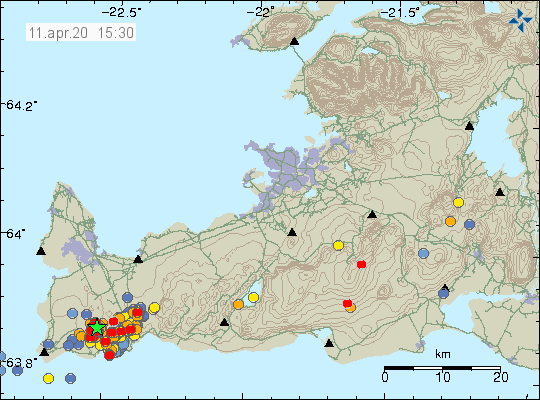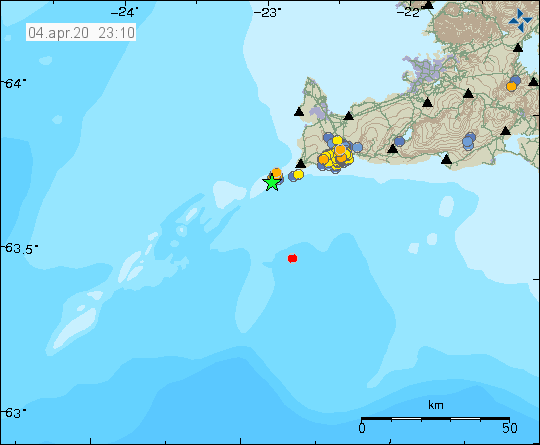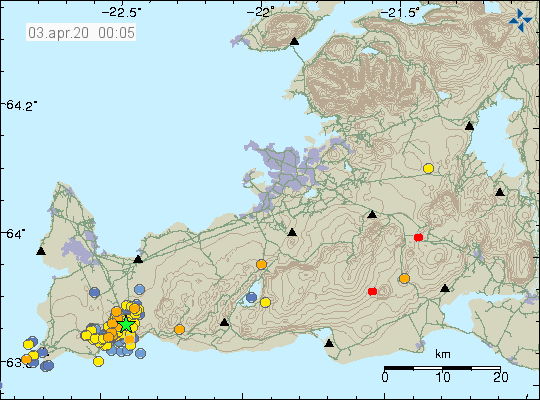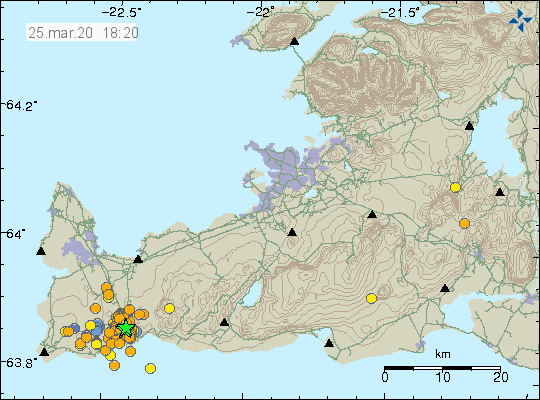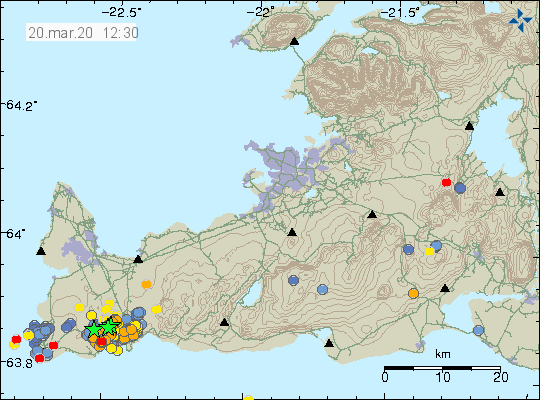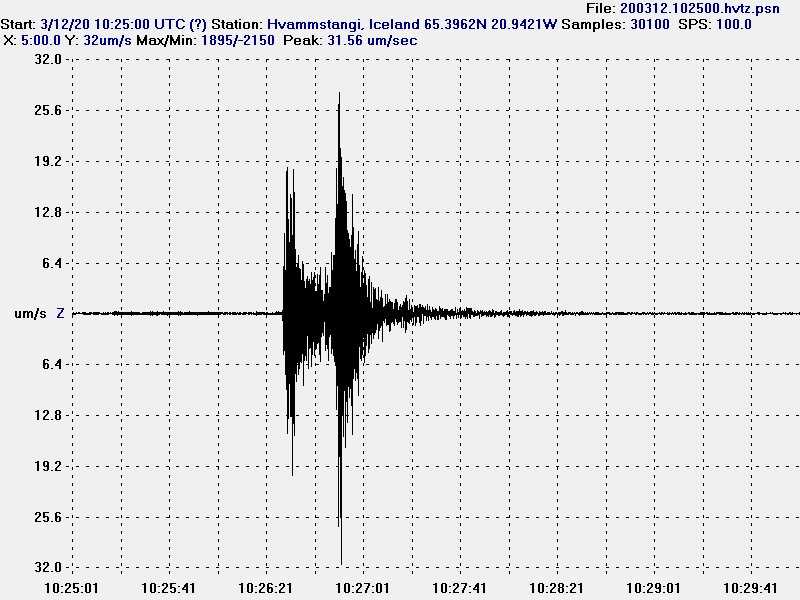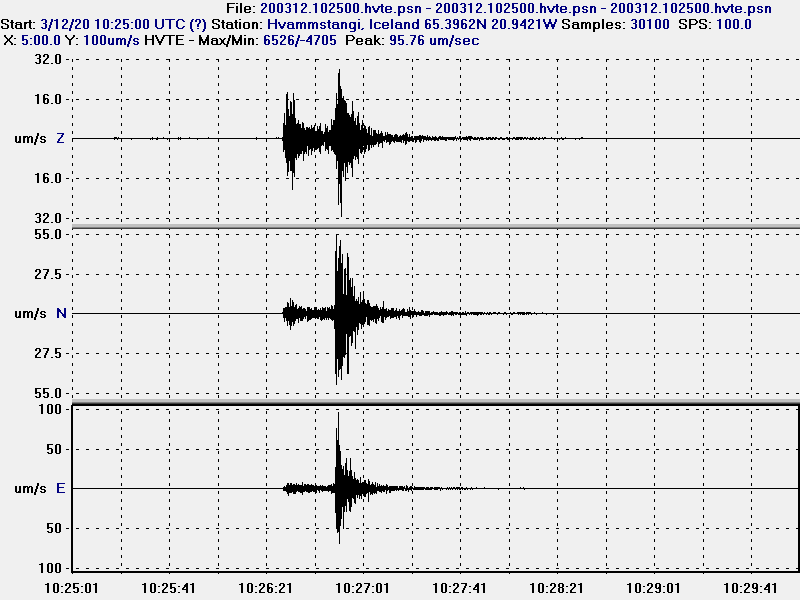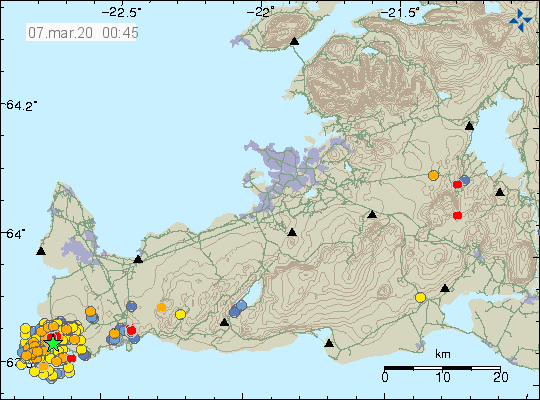Since early this morning (18-May-2020) earthquake activity has been increasing in Reykjanes volcano. For the last several weeks there has been a deflation taking place in the volcanoes from Krýsuvík (possibly) and to Reykjanes volcano. Such event is to be expected with a rift volcanoes (see Krafla volcano 1980 – 1984 eruptions).
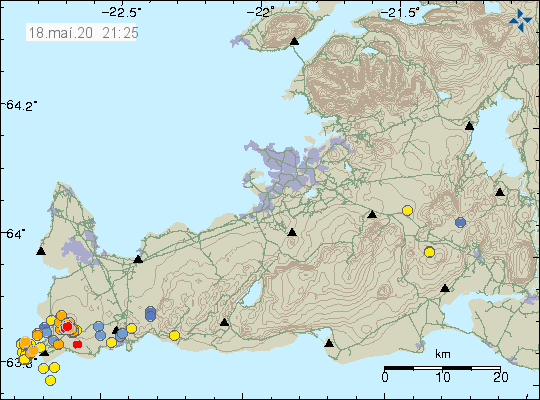
Current earthquake activity in the Reykjanes volcano and Þorbjörn mountain. Copyright of this image belongs to Icelandic Met Office.
Other than this minor activity it has been quiet in Iceland for the last month. This happens regularly in Iceland. This quiet time might last a while longer.
Donations
Please remember to support my work with donations. Support is still needed when things are quiet in Iceland. Please see the pinned article for more details. Thanks for the support. 🙂

